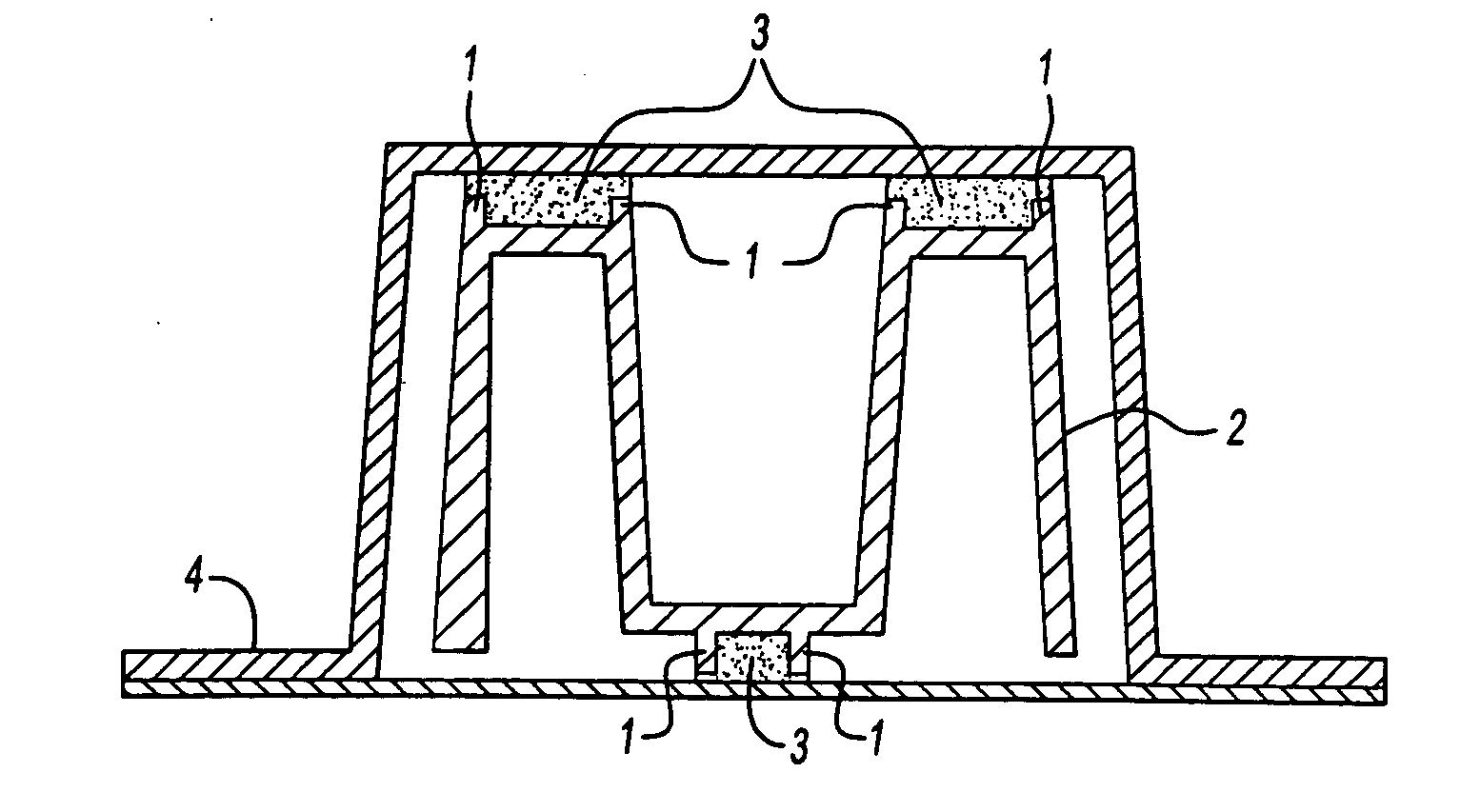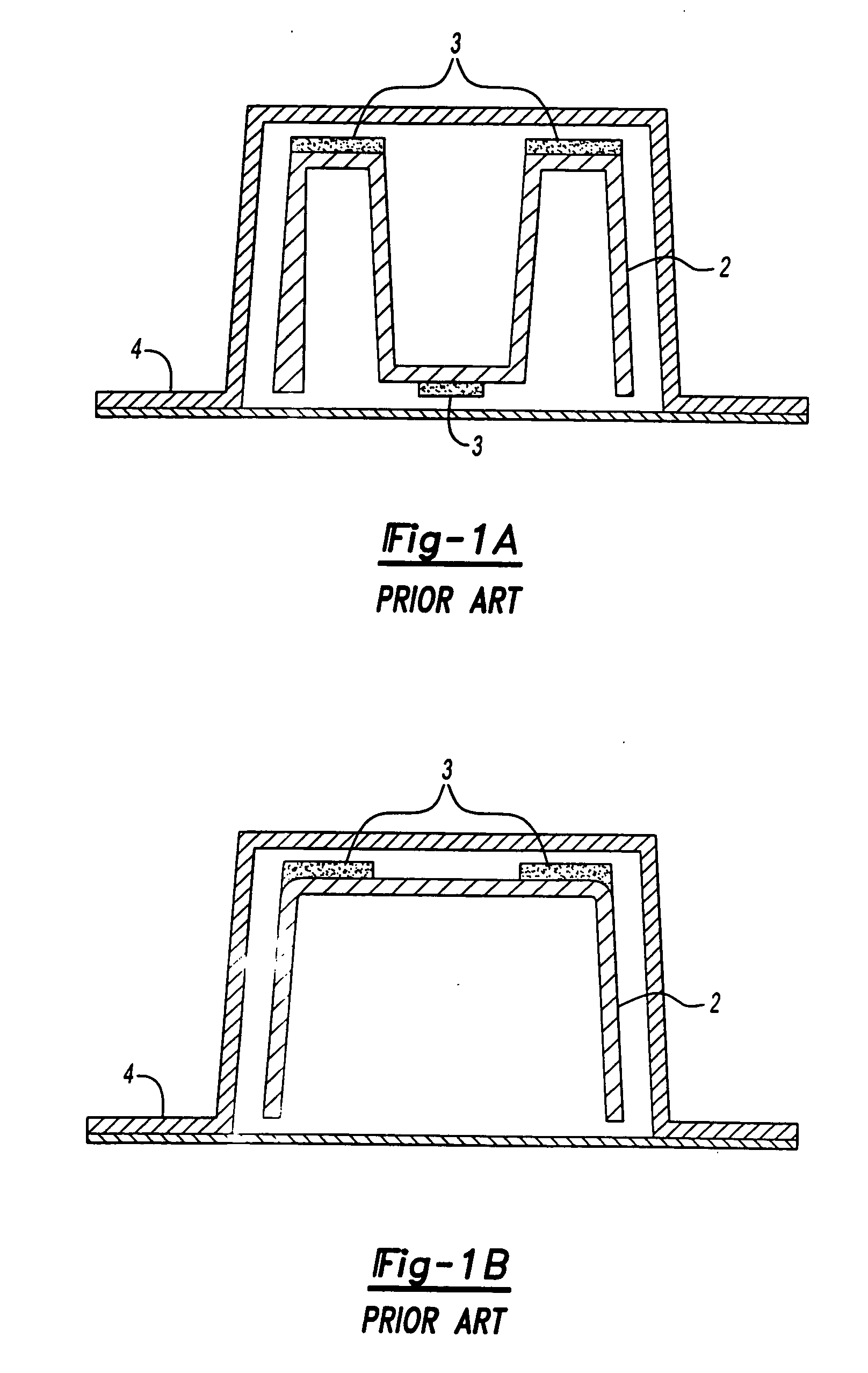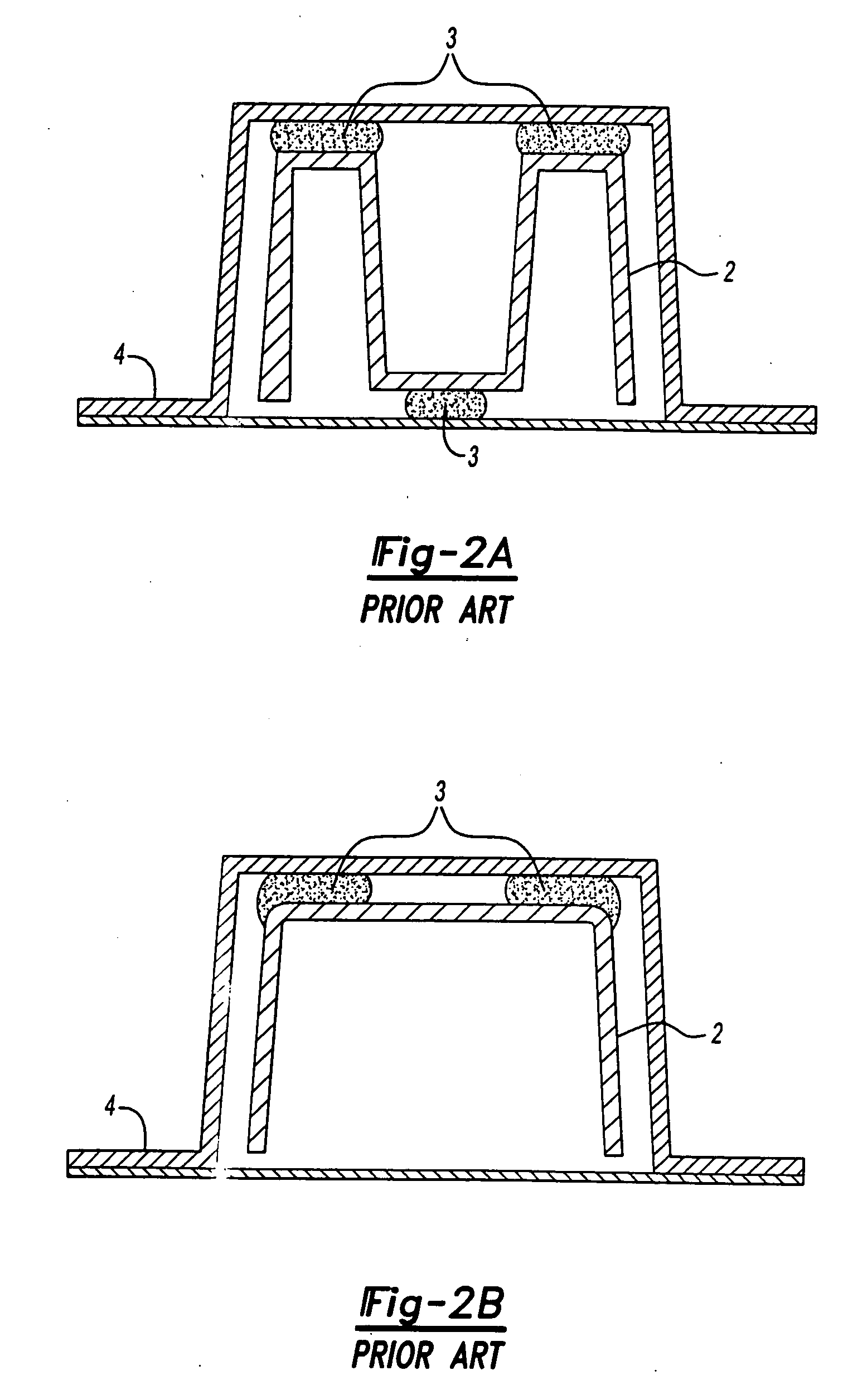Structural reinforcement
a technology of structural reinforcement and reinforcement layer, applied in the direction of roofs, transportation and packaging, vehicle arrangements, etc., can solve the problems of not being able to perform electrocoat over the entire surface local areas of corrosion,
- Summary
- Abstract
- Description
- Claims
- Application Information
AI Technical Summary
Benefits of technology
Problems solved by technology
Method used
Image
Examples
Embodiment Construction
[0035]FIG. 1A shows a cross section of a hollow structural member (e.g., for a vehicle) 4 in which is positioned a reinforcing member 2 with an ‘M’ shaped cross section. An expandable adhesive material 3 is provided on the surface of the reinforcing member 2 adjacent the inner surface of the structural member 4. FIG. 2A shows the same cross section as FIG. 1A but after expansion of the expandable adhesive 3 as may be accomplished by the curing step in the electrocoat process. FIG. 2A shows how the adhesive 3 expands between the reinforcing member 2 and the structural member 4 to provide a foam which bonds the reinforcing member and the structural member together.
[0036]FIG. 3A shows the same cross section of the hollow vehicle structural member 4 containing an ‘M’ shaped reinforcing member 2. In this instance the reinforcing member is provided with a pair of ribs 1 at the three positions where the expandable adhesive is provided. These pairs of ribs form grooves which contain the ex...
PUM
| Property | Measurement | Unit |
|---|---|---|
| temperatures | aaaaa | aaaaa |
| length | aaaaa | aaaaa |
| size | aaaaa | aaaaa |
Abstract
Description
Claims
Application Information
 Login to View More
Login to View More - R&D
- Intellectual Property
- Life Sciences
- Materials
- Tech Scout
- Unparalleled Data Quality
- Higher Quality Content
- 60% Fewer Hallucinations
Browse by: Latest US Patents, China's latest patents, Technical Efficacy Thesaurus, Application Domain, Technology Topic, Popular Technical Reports.
© 2025 PatSnap. All rights reserved.Legal|Privacy policy|Modern Slavery Act Transparency Statement|Sitemap|About US| Contact US: help@patsnap.com



